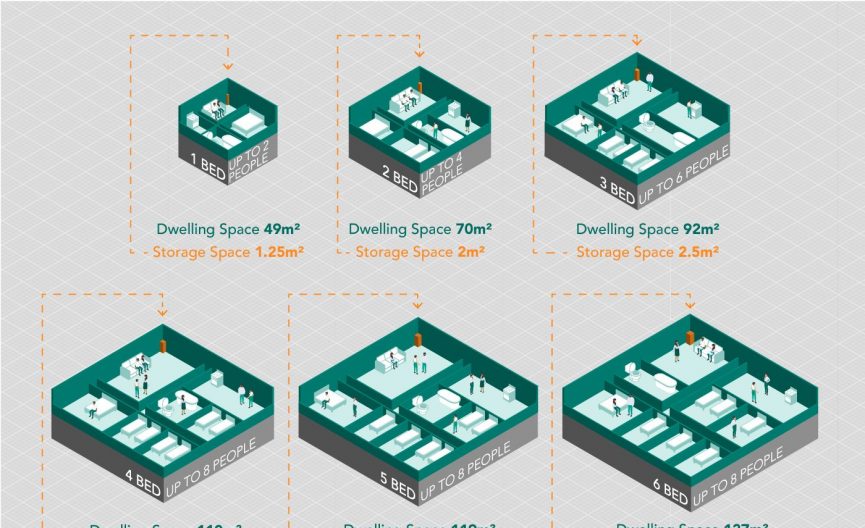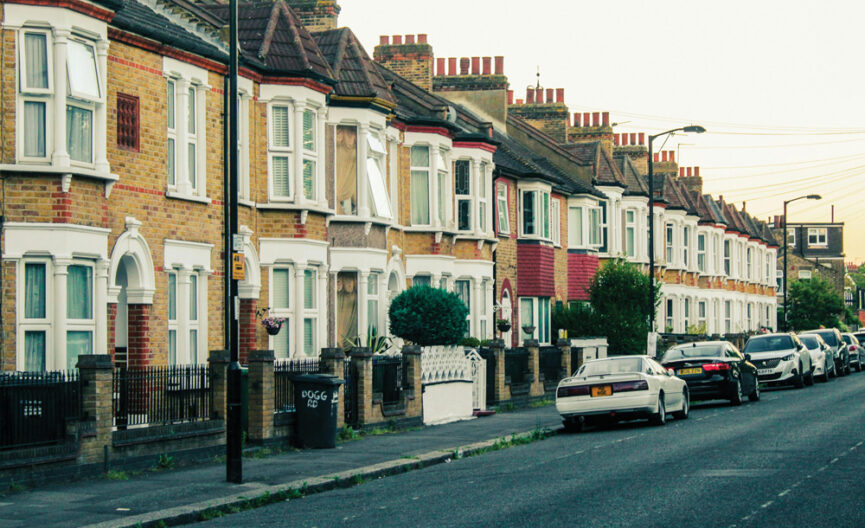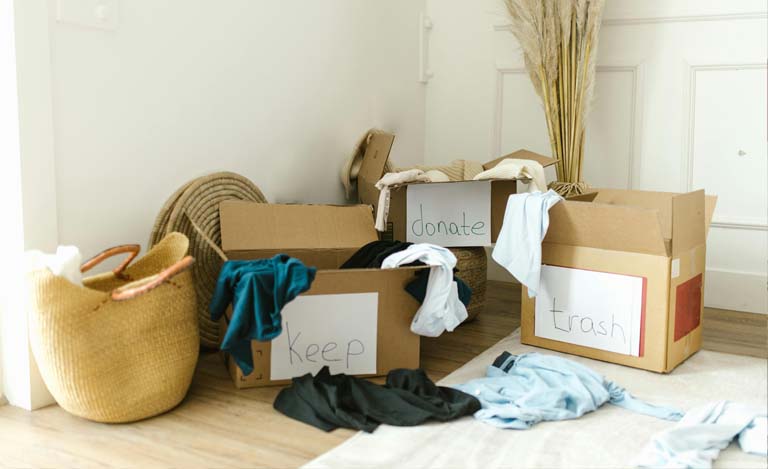Modern homes are getting smaller than ever. Find out what the minimum storage space is for different sized new-builds today and assess how much you can expect to keep inside.
Whether you have gone for the full Marie Kondo and decluttered your entire home, or prefer to hang onto your belongings, we all expect at least a little storage in our houses. Everybody needs some extra space to put away boxes, out of season clothes and functional items like vacuum cleaners, ironing boards and mops which would just get in the way elsewhere. The thing is, many people find that they never quite have enough storage for all their belongings. Without a doubt, there are plenty of clever things you can do to maximise storage space and find ways of making use of the area under your bed, walls and the top of wardrobes. All the same, it is useful to know that you have a right to a certain amount of space in your new build home for keeping your belongings. The government has laid out guidelines on how much space should be set aside exclusively for storing your stuff. So, how much space can you expect, and what could you reasonably store inside it? We dug into the data to find out.
Dwelling Space Versus Storage Space
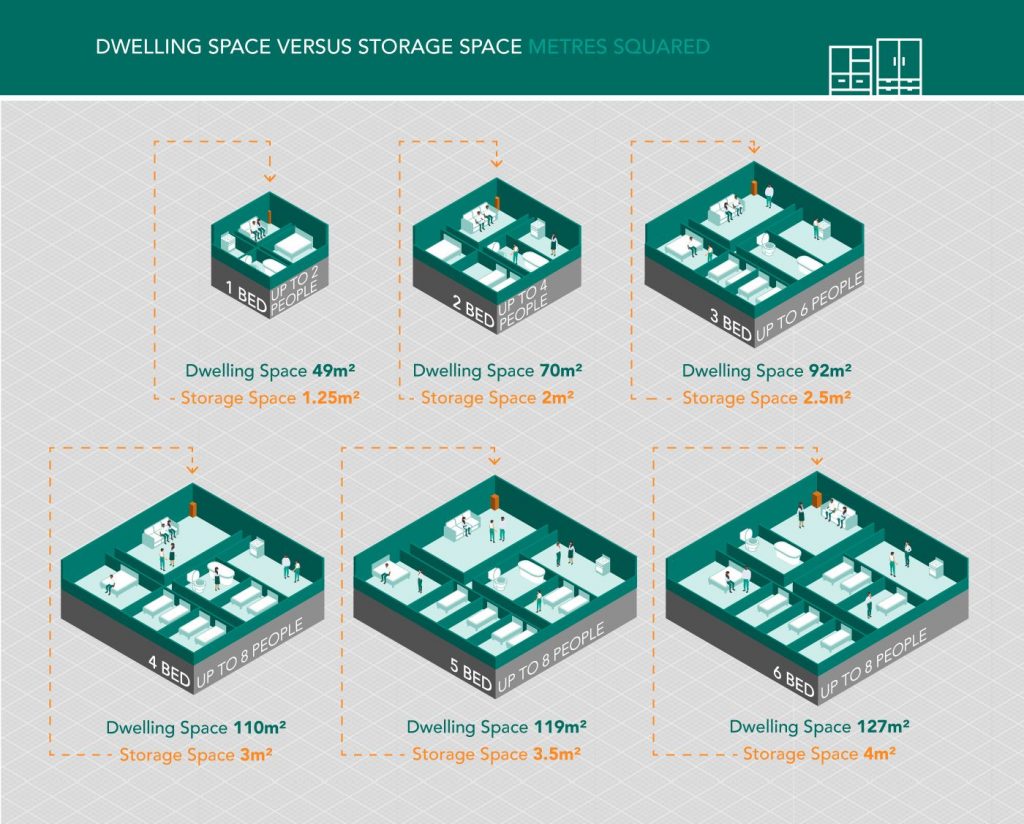
In 2015 the government published standards for storage space in new homes. It essentially set out a minimum amount of floor space that had to be dedicated to storage – be that separate storage rooms around the property, under the stairs, or in the form of built-in wardrobes. The standards relate to space within the interior walls of the property – so attics, basements and garages don’t count.
It’s All Relative
Unsurprisingly, the amount of space dedicated to storage goes up as the size of the rest of the property increases. A one-bed flat with a maximum of two occupants is, logically enough, required to have fewer square metres dedicated to storage (at 1.5m squared), while a three-bed home requires a minimum of 2.5 square metres to keep your belongings.
What kind of stuff could you store in the amount of space available?
One Bed Home
With a minimum storage space off 1.25m squared, you could expect to fit:
- Cleaning items (ironing board, vacuum cleaner, mop and bucket, broom and dustpan)
- A small suitcase
- A couple of storage boxes
Two Bed Home
With a minimum storage space of 2.0m squared, you could expect to fit:
- Cleaning items (ironing board, vacuum cleaner, mop and bucket, broom and dustpan)
- A large suitcase
- 3-4 storage boxes
- Coats and jackets
- A box of tools
- Small fold up table
Three Bed Home
With a minimum storage space of 2.5m squared, you could expect to fit:
- Cleaning items (ironing board, vacuum cleaner, mop and bucket, broom and dustpan)
- 2 large suitcases
- 3-4 storage boxes
- Coats and jackets
- A box of tools
- Small fold up table
- Standing fan
- Standing lamp
Four Bed Home
With a minimum storage space of 3.0m squared, you could expect to fit:
- Cleaning items (ironing board, vacuum cleaner, mop and bucket, broom and dustpan)
- 2 large suitcases & 1 small suitcase
- 5 storage boxes
- Coats and jackets
- A box of tools
- Small fold up table
- Standing fan
- Standing lamp
- Box of personal effects
- Box of records/ CDs/ DVDs/ books
Five Bed Home
With a minimum storage space of 3.5m squared, you could expect to fit:
- Cleaning items (ironing board, vacuum cleaner, mop and bucket, broom and dustpan)
- 2 large suitcases & 2 small suitcases
- 5-6 storage boxes
- Coats and jackets
- Boots and outdoor clothes
- A box of tools
- Small fold up table
- Summer garden chairs (stacked)
- Standing fan
- 2 standing lamps
- Box of personal effects
- Box of records/ CDs/ DVDs/ Books
6 Bed Home
With a minimum storage space of 4.0m squared, you could expect to fit:
- Cleaning items (ironing board, vacuum cleaner, mop and bucket, broom and dustpan)
- 3 large suitcases & 2 small suitcases
- 6 storage boxes
- Coats and jackets
- Boots and outdoor clothes
- A box of tools
- Medium size fold up table or a coffee table
- Summer garden chairs (stacked)
- Standing fan
- 2 standing lamps
- Box of personal effects
- Box of records/ CDs/ DVD’s
All In Proportion
Although the storage space allocated to different sized properties varies, it is all roughly in proportion. Generally speaking, homes must provide between 2.5 percent and 3.2 percent of the total floor space for storage. One bed homes have the smallest proportion set aside for storage – perhaps unsurprisingly since single people and couples tend to have fewer belongings. Nonetheless, as a proportion of the entire space, homes of all sizes dedicate a similar area to storage.
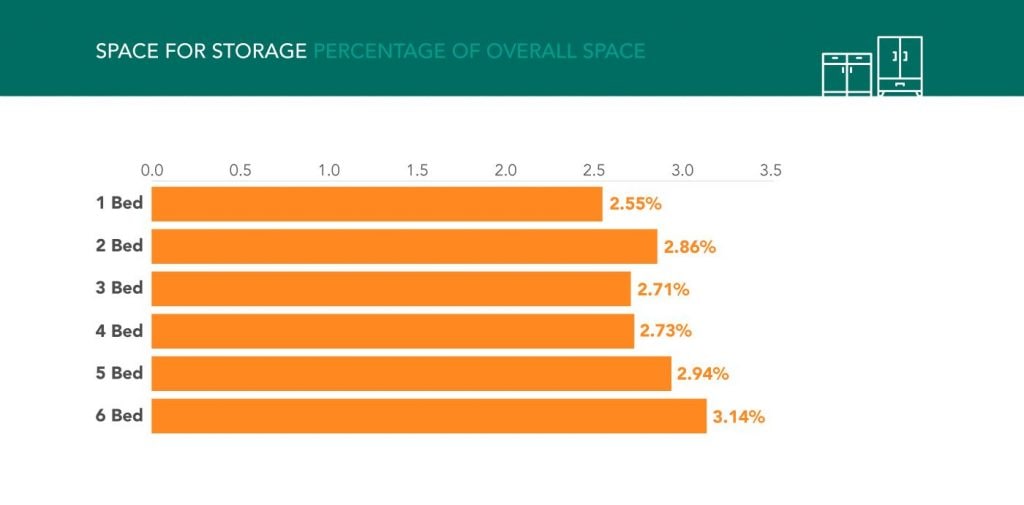
Shrinking Space
Although it is certainly welcome that the government has set out standards for minimum storage space in new homes, the fact of the matter is homes are simply getting smaller. New properties built today are the smallest they have ever been, at, on average, 67.8 square metres of floor space – more than 20% smaller than properties built in the 1970s.
This means that even though storage standards have been put in place, this still results in less storage space in absolute terms than homeowners could have expected in the past.
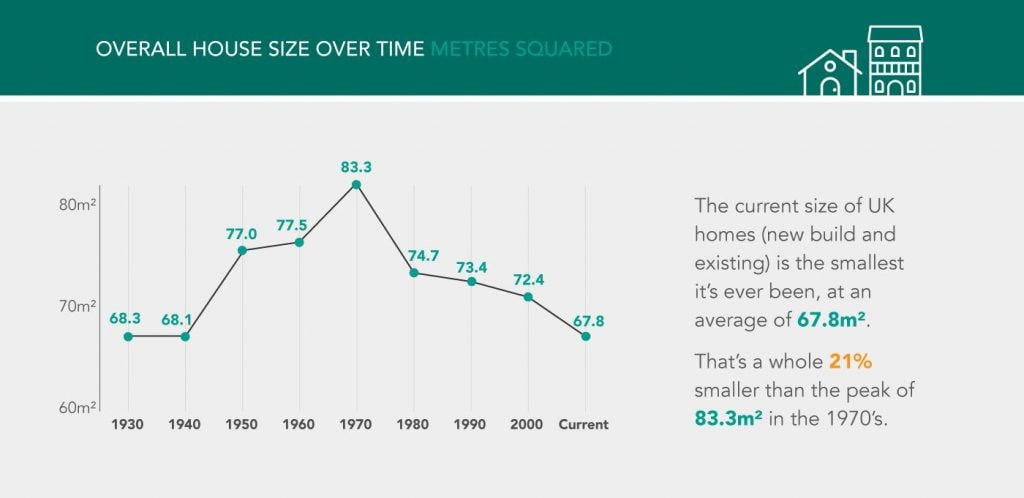
The Current Reality
For better or worse homes are getting smaller and people, therefore, have less space available for their belongings. While some people will enjoy decluttering, not everything can or should be thrown away – especially if you hope to upgrade to somewhere bigger in the future where you can keep everything in your home.
In the meantime, flexible and inexpensive services like Attic Self Storage can make it easier to adapt to the fact that modern homes simply don’t offer the same space as older properties by allowing you a quick and easy way to store your belongings. This can be particularly cost-effective in the long run when you consider the replacement cost of some of the items you might store.
To learn about clever ways of making more usable space outside dedicated storage areas, read our personal storage articles here.
